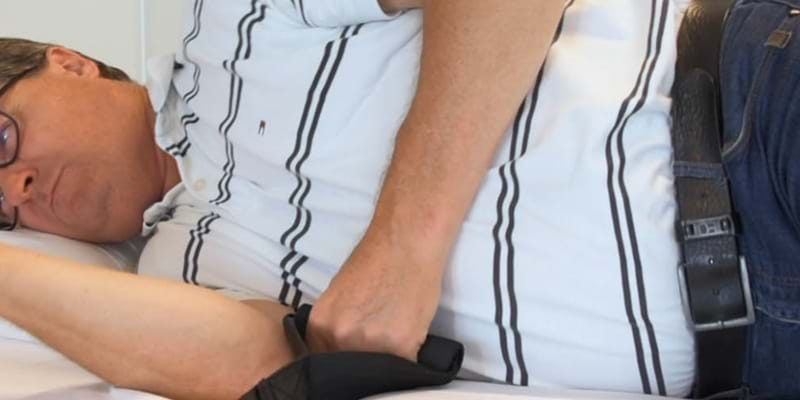
When Should A Powered Turning Aid Be Used?
If you are familiar with manual moving and handling techniques, using a powered turning aid might not be the first thing that comes to mind, when a resident or client starts becoming more and more difficult to handle. But in many cases, it can improve both work health and safety and quality of care.
18. November 2019
By: Occupational Therapist, Pia Beck
In many cases, a powered turning system is not considered until the client or patient is very difficult to transfer and/or is completely immobile. But in many situations, it will be advantageous to implement a VENDLET system much sooner to relieve care specialists from heavy pushing and pulling and to provide a higher quality of care.
Pushing and Pulling Effects Carers
During the last decade, healthcare sectors across the world have become increasingly aware of the risks of manually lifting patients, e.g., from the bedside to a wheelchair. However, many are still unaware of the risks involved when pushing or pulling during patient transfers.
When needing to transfer a client, a sliding material to reduce friction is often placed underneath the client. However, even when taking this precaution, pushing, and pulling during patient transfer is still very straining on carers. This is because the carer themselves is affected by the push/pull, even when using proper technique.
This is simply explained by Newtons Third Law of Motion which states that when one object exerts a force on a second object, that second object exerts a force that is equal in magnitude and opposite in direction on the first object. Transfer this law to patient transfer and it becomes clear why there is also a risk involved when using proper moving and handling techniques – staff is strained by every push and pull themselves.
For clients with some mobility, that can assist the carer, patient transfers can be relatively safe to perform although still physically exhausting. However, for clients with limited or no mobility a powered turning aid should be considered, as the more immobile client requires more force from carers.
Avoid Discomfort and Anxiousness
Besides work health and safety for care specialists, another dimension of when to consider a powered turning is client comfort and anxiousness.
Many clients who experience some level of immobility also suffer from other issues. This might be physical pain or cognitive disorders.
Physical pain is very often worsened during moving and handling, due to the necessary grabbing, pushing, and pulling. Meanwhile, for clients with cognitive disorders patient transfers can often be confusing and provoke anxious or aggressive behaviour towards staff. This might be worsened by a lack of communicative abilities as is often seen in people with onset Dementia.
In both instances, using a powered turning system can be beneficial, as patient transfer becomes more consistent from time to time, no matter what carer is performing the transfer, and because the movement slides smoothly rather than unevenly and bumpy. This has a calming effect for most clients.
However, it is also important to implement powered turning aids in a timely manner, so that both clients and staff get the most out of it.
Early Implementation Provides Greatest Benefits
A very late implementation can make it difficult to achieve the full benefits of a powered turning device such as the VENDLET. For example, it is difficult for staff to become completely familiar with the system if it is only available for a short time, and it also takes time for the client to get used to a new aid.
Unfortunately, the implementation of VENDLET is often the last resort when everything else has been attempted. As stated above, this can have major consequences for the client, as transfers can be painful and unpleasant, which can be relieved from a powered turning aid that is gentler on the skin, has a calming effect and increases safety.
As such, the VENDLET system should not only be considered in cases of complete dependence, but can with great benefit also be used with clients that have light to moderate physical limitations.
Powered Turning Aid Target Groups
A study from the Danish Technological Institute, which has explored the effects of VENDLET, states that the following patient groups can benefit from a powered turning aid:
- Clients with Alzheimer's Disease and Dementia
- Clients that tend to be physically or verbally abusive towards staff
- Patients in a lot of pain, e.g., clients with cancer pain or terminal clients
- Fully or partially paralysed clients such as hemiplegia or paraplegia
- People with Cerebral Palsy
- Clients with disabilities that limit their mobility
- Clients with ALS, multiple sclerosis, or Parkinson's disease
- Bariatric clients
These target groups make it clear that it is not only for clients with total limitations that powered turning systems must be used. To ensure a better quality of care and the optimal working environment for staff, a powered turning system should be implemented in a timely manner and for a broad variety of clients.
